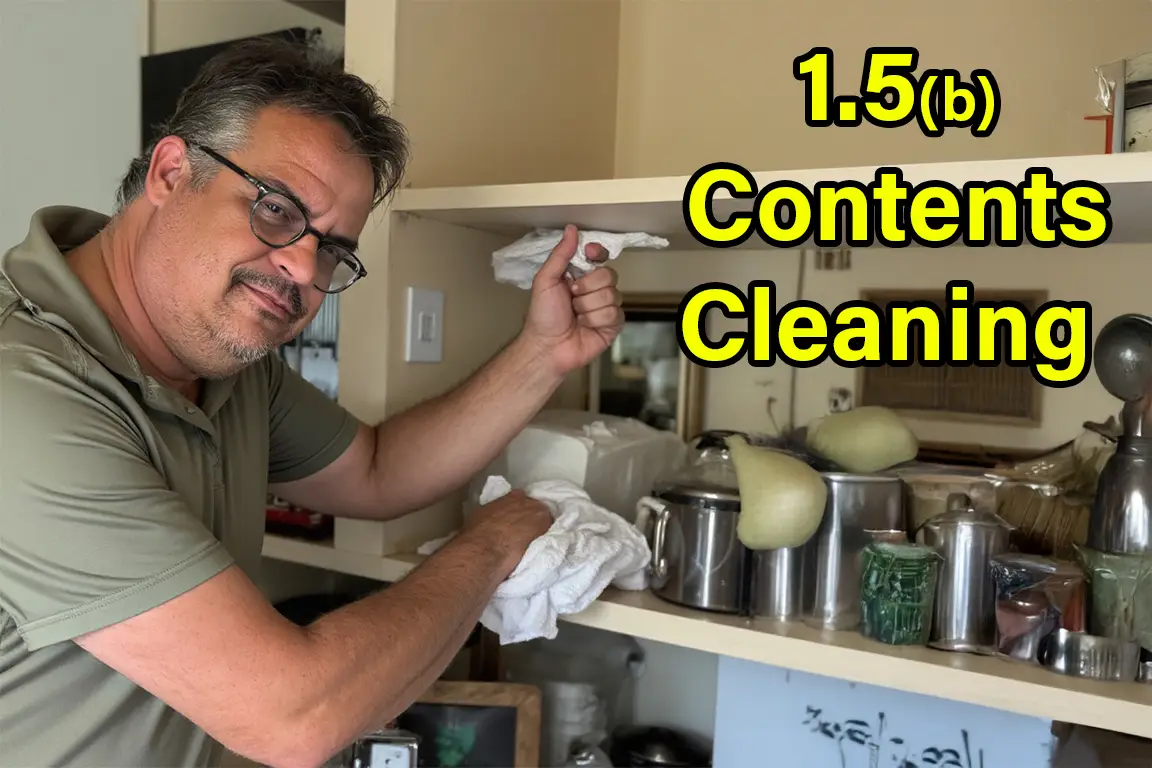Protect Yourself: Personal Protective Equipment
Why PPE Is Essential for Mold Handling
Mold spores are microscopic and easily become airborne. Without proper protection, exposure can lead to serious health effects, including:
- 🚨 Respiratory problems – Wheezing, coughing, worsened asthma
- 🚨 Allergic reactions – Sneezing, skin rashes, sinus irritation
- 🚨 Long-term sensitization – Repeated exposure can trigger chronic mold sensitivity
- 🚨 Mycotoxin exposure – Some mold species release toxins that can affect the nervous system
💡 Fact: Enclosed spaces increase the concentration of airborne spores. PPE becomes even more critical in these environments.
Essential PPE for Mold Handling
🔹 Respiratory Protection
- N95 respirator – Blocks 95% of airborne particles; suitable for light exposure
- P100 or half-face respirator – For prolonged or moderate exposure
- Full-face respirator – Best for high contamination and eye protection
💡 Avoid simple dust masks—they do not filter mold spores effectively.
🔹 Protective Clothing
- Disposable coveralls (Tyvek suits) – Full-body barrier
- Long sleeves and pants – If coveralls aren’t available, wash clothes immediately
- Shoe covers or disposable boots – Prevent tracking spores into clean areas
💡 Wash contaminated clothing separately in hot water.
🔹 Eye Protection
- Safety goggles (non-vented) – Prevent mold spores from entering eyes
- Full-face respirators – Provide both respiratory and eye protection
💡 Regular glasses do not seal out airborne particles.
🔹 Hand & Skin Protection
- Nitrile, neoprene, or rubber gloves – Resist mold and cleaning agents
- Avoid latex gloves – Porous and potential allergen
💡 Wash hands thoroughly with antibacterial soap after removing gloves.
How to Wear & Remove PPE Properly
Wearing PPE:
- Put on coveralls and zip fully
- Wear gloves over sleeves
- Secure N95 or P100 respirator tightly
- Apply goggles or full-face respirator
- Cover shoes last to avoid contamination
Removing PPE:
🚨 Never remove PPE inside the contaminated area.
- Step onto a clean surface
- Remove shoe covers first
- Peel gloves off inside-out
- Unzip coveralls and roll inward as you step out
- Remove mask and goggles last
- Wash hands, face, and any exposed skin thoroughly
💡 Dispose of used PPE in a sealed bag if possible.
When to Upgrade to Professional PPE
Consider professional-grade protection if:
- You’re handling severe infestations (10+ sq ft)
- You’re exposed to toxic molds like Stachybotrys chartarum
- You’re working in confined spaces with poor ventilation
- You’re disturbing insulation, drywall, or soft building materials
Recommended Equipment:
- P100 or full-face respirator
- Chemical-resistant gloves
- Professional-grade coveralls with hood
💡 If you feel dizzy, short of breath, or unwell—leave the area immediately and seek help.
Conclusion
Wearing proper PPE is a critical part of safely handling mold. With the right gear, safe techniques for putting it on and taking it off, and knowing when to level up your protection, you can significantly reduce your health risks and prevent the spread of contamination.

